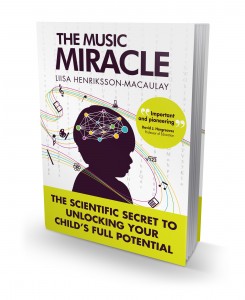Have you heard the news? This week, the Telegraph reported:
“Rising numbers of pupils can “hardly move” at the age of 11 because of a lack of specialist PE teachers in primary schools, it was claimed.
Baroness Campbell said there was a danger that the Olympic legacy may be wasted as schools fail to convert a wave of goodwill towards sport into actual participation.
She warned that primary teachers received little formal training in PE and often lacked the confidence to deliver high-quality lessons in the subject.”
This is precisely the same problem that has been identified when it comes to music education. The majority of the teachers themselves do not have a background in music, so how are they supposed to teach it to our children? They don’t. I know a child who at school has learned to be proficient at recognizing the sound of different instruments, but doesn’t know how to tell major from minor, let alone count beats or read music.
The problem with this is what Lamb and Gregory identified back in 1993: learning to recognize sounds of instruments, timbres, does not boost the brain. Only music training does. Lamb and Gregory’s finding was that the better your child is at recognizing pitches, the better their reading skills are. And by boosting these melodic skills by ear training, their reading skills improve.
But what’s more relevant for today’s topic, music training also boosts motor skills. This belongs in what Howard Gardner has called ‘bodily-kinesthetic intelligence’. Back in the 1960s, scientists found that when people train while music plays in the background, they are able to lift significantly more weights and run faster and longer than they did without music. (This explains why the Body Pump class blasts louder dance music than your average nightclub.)
A crucial discovery was made in 1967 by G. L. Beisman who organized an experiment on over 600 children. The children were divided into two groups that were taught motor skills such as kicking, jumping and throwing with an identical amount of repetitions and identical instruction. The only difference was that the other group was taught this with rhythmic music, and the other group didn’t have music on at all. The children who were taught through music ended up learning these crucial motor skills significantly better than the children who were taught without music.
A more recent study from 2004 by Evridiki Zakhopoulou and her research group found that standard PE classes failed to improve the motor skills of children (aged 4-5 in this study) at all, whereas the music and movement groups had improved their motor skills and balance in just two months!
Brain imaging studies now have shown that music training activates the motor regions of the brain. In fact, even listening to rhythmic music activates the motor regions, making babies who listen to music with a beat (such as drums or percussion) spontaneously try and match their movements to music! (Zentner & Eerola, 2010) This is crucial for not only their motor development but their intellectual development, as bad rhythmic motor skills predict future learning difficulties (see, for instance, Waber, Weiler, Bellinger, Marcus, Forbes, Wypij & Wolff, Diminished motor timing control in children referred for diagnosis of learning problems, 2000) whereas good rhythmic motor skills, such as clapping and moving to rhythm, predict higher academic achievement in the years to come (see, for instance, Brodsky & Sulkin, 2011).
Don’t let your child fall behind — let your child shine with moving to music!








 It’s beginning to look a lot like that time of the year again. On the surface, Christmas may hold different meanings to different people, but behind the differences a few undisputed core values emerge: family and the loved ones. Gifts, Christmas cards and joint celebrations all promote love and togetherness. Most of all, Christmas is a time for children: after all, Christmas started from celebrating the birth of a child.
It’s beginning to look a lot like that time of the year again. On the surface, Christmas may hold different meanings to different people, but behind the differences a few undisputed core values emerge: family and the loved ones. Gifts, Christmas cards and joint celebrations all promote love and togetherness. Most of all, Christmas is a time for children: after all, Christmas started from celebrating the birth of a child. 


